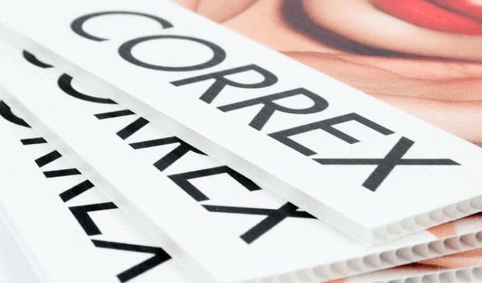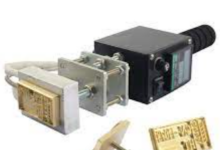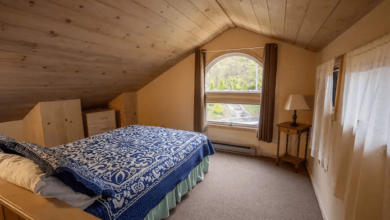Which Is Better—Correx or Foamex?

When selecting materials for signage, displays, or any kind of exhibition material, it’s essential to choose the right substrate to suit your specific needs. Two popular choices are Correx and Foamex. Each has distinct properties and advantages that can serve a variety of purposes.
Let’s delve into the attributes of both to determine which might be the superior choice for your next project.
Understanding Correx
Correx is a brand name for fluted polypropylene sheeting, commonly referred to as corrugated plastic. It is renowned for its lightweight nature, durability, and cost-effectiveness. These characteristics make it an ideal choice for temporary outdoor signs, such as estate agent boards, campaign placards, and event signage.
Durability and Flexibility
Correx is highly resistant to water, making it suitable for the unpredictable UK weather. Its fluted inner structure offers excellent durability for its weight, and it is also resistant to chemicals and impact, ensuring a long life for temporary signs, even in tough environments.
Eco-Friendly and Reusable
Another advantage of Correx is its eco-friendliness. It is fully recyclable, which makes it a great choice for environmentally conscious users. Plus, its sturdiness allows it to be reused for multiple occasions before recycling.
Cost-Effectiveness
In terms of economy, Correx is generally more affordable than Foamex. This makes it an attractive option for those who need to produce a large number of signs on a budget.
The Case for Foamex
Foamex is a brand name for PVC foam sheeting. It is a rigid, durable material that provides a smooth, high-quality finish. It’s often used for long-term indoor or outdoor signs, exhibition panels, and for mounting images and prints.
High-Quality Finish
Foamex has a smooth surface that is ideal for high-resolution printing. It provides vivid colours and crisp lines, ensuring that your images and text stand out with a professional finish.
Versatility in Thickness
Foamex sheets come in a variety of thicknesses ranging from 1mm to 19mm. This makes it a versatile choice for a range of applications, from simple signage to the creation of 3D displays.
Strength and Rigidity
Though heavier than Correx, Foamex is remarkably strong for its weight and has a higher rigidity. This means it can be used for more permanent signs and displays without the need for additional support.
Comparing Applications
Temporary Versus Permanent Signage:
If you’re looking for temporary, lightweight signage that can be moved easily and stored between uses, Correx is likely your best bet. For more permanent, robust displays, Foamex is more appropriate, especially where a premium finish is required.
Indoor Versus Outdoor Use
Both materials can be used outdoors, but Correx has the edge in terms of weather resistance. However, for outdoor signs where longevity and aesthetic quality are paramount, Foamex, with the correct sealants, can also be suitable.
Print Quality and Presentation
When it comes to the quality of print and overall look, Foamex generally offers a more polished appearance, which is particularly important for high-end displays or where you want to make a strong visual impact.
Making the Right Choice
Your decision between Correx and Foamex should be guided by the specific requirements of your project. Factors such as budget, the desired lifespan of your signage, whether the application is indoor or outdoor, visual expectations and environmental considerations all play a crucial role in making an informed choice.
To find out more about the specific properties of Correx and Foamex, it’s wise to consult with a professional sign maker who can provide detailed insights and examples of each material in use.
Conclusion
In the debate of Correx versus Foamex, there is no one-size-fits-all answer. Correx stands out for temporary, cost-effective signage needs, especially when resilience and reusability are important. Foamex, on the other hand, excels in producing a high-quality, professional finish for long-term displays.
Consider the factors relevant to your situation to choose the material that will not only meet your needs but also enhance the presentation of your message.







